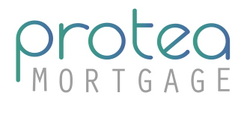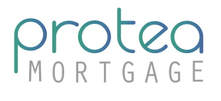|
Retirement Planning in the Age of Longevity Amara Rose HECM WORLD November 19,2013 "To the degree that people reach old age mentally sharp, physically fit, and financially secure, the problems of individual and societal aging fall away.” — Laura L. Carstensen, Founding Director Stanford Center on Longevity According to a Stanford study on planning for retirement at a time when we’re living longer than ever before, confidence in the ability to retire comfortably — or even to retire at all — is at a new low. Pitfalls include:
The biggest challenge is failing to plan for retirement at all, researchers say. Only a third of adults in their 50s have ever tried to devise a retirement plan…and only two-thirds of those who have tried have succeeded. Even among those who do save, fear of limited resources tops the list of retirement concerns. According to a Bank of America Merrill Lynch 2013 Workplace Benefits Report, in a nationwide survey of more than 1000 employees from companies of all sizes:
Yet continuing to earn isn’t the only reason for seniors to postpone retirement, says U.S. News & World Report, which suggests there are a number of good reasons to retire the idea of retirement for a while yet, such as:
0 Comments
 #1Borrower will be limited to using only 60% of the Gross Principal limit in the first year. The only exception is when mandatory payoffs exceed 50% of the Gross Principal limit. The clarify the gross principal limit is the Maximum Claim Amount (Homes Appraised Value or Lending Limit...whichever is less) times the new Principal limit factor. We are not looking at the Net Principal limit after closing costs, fees and payoffs are subtracted. #2.HUD has cut borrowers with high mortgage balances or mandatory payoff obligations some slack. When their mandatory payoff balances exceed 50% of the Gross Principal Limit the borrower can take an additional 10% despite exceeding the 60% threshold. #3 Initial disbursements can exceed 60% of the Gross Principal limit in the first year. In this example we see a $140,000 mandatory payoff of obligations plus repairs and a partial lump sum of $7,000 which totals 80% of the principal limit. #4 Don’t forget to include these items when calculating the percentage of the principal limit used. Upfront MIP, closing costs, fees, repair set asides and other financed costs. #5- If a mandatory set aside is made for tax, homeowner’s and flood insurance only the payments made in the first year count toward the 60% disbursement cap. #6 Upfront FHA Mortgage Insurance Premiums are higher for those who exceed 60%. This should only apply to those with substantial mandatory payoffs of obligations as borrowers cannot elect to exceed 60% use of the principal limit without true need. #7 We have some time. The Financial Assessment does not go into effect until January 14th of next year. #8 If in the process of underwriting and conducting a financial assessment it is determined that a set aside account is required HUD uses a Lifetime Expectancy Set Aside which may pay property charges from Tenure or Term monthly payments or Line of Credit as they become due and payable with the borrower’s prior authorization. Set Aside or LESA takes into account the future growth in the Principal Limit (or line of credit) based on the expected rate and ongoing MIP. In this example a 62 year old borrower with $4,200 in annual property charges or $350 a month would have a life expectancy set aside account of $49,000. That is better than $89,000 if they only based it on monthly payments without accounting for growth in the principal limit. #9 Ongoing Mortgage Insurance Premium rates remain unchanged at 1.25 % annually. The upfront charges vary based on funds taken in the first year, .5% or 2.5%. #10 and lastly- we have weathered worse storms than this. In the years 2009 and 10 we had home values plummet by 30 to 50% and a then saw original principal limit factors cut by 10%. Combined that was effectively a 40 to 60% reduction in the principal limit in many cases. Today we have stabilizing and appreciating home values with a 15% reduction in lending ratios. |

 RSS Feed
RSS Feed
